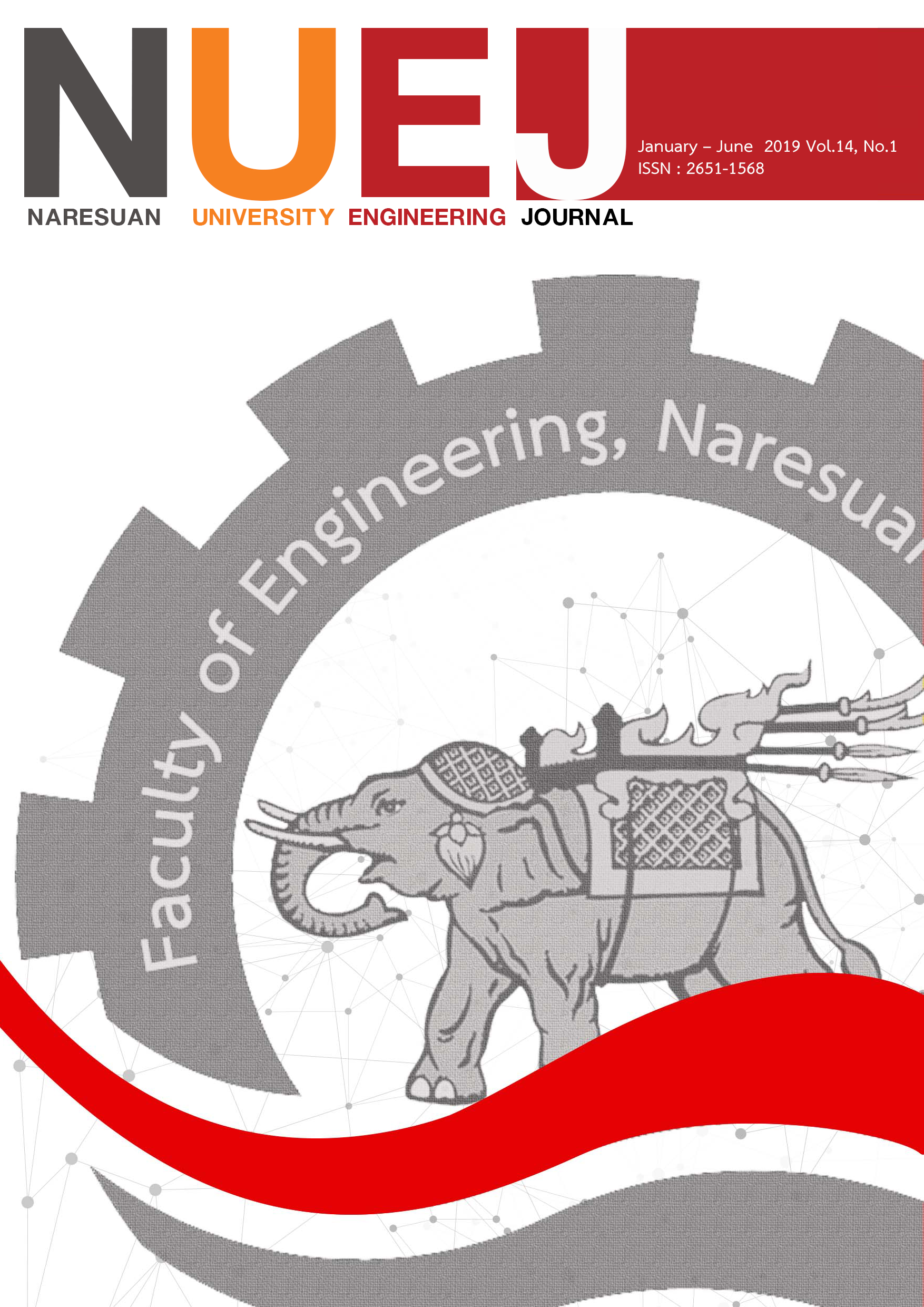การปรับปรุงตัวทำนายโลมบัสสำหรับการฝังข้อมูลแบบกู้คืนกลับได้บนพื้นฐานของ PEHS และการเรียงลำดับโดยใช้การถ่วงน้ำหนักแบบเชิงเส้น
Main Article Content
บทคัดย่อ
การถ่วงน้ำหนักที่เท่ากันของตัวทำนายสำหรับทุกภาพ และทุกขนาดของการฝังก่อให้เกิดความผิดพลาด ในบทความนี้นำเสนอการปรับปรุงตัวทำนายสำหรับการฝังข้อมูลแบบกู้คืนกลับได้ (Reversible Data Hiding: RDH) ที่อยู่บนพื้นฐานของวิธีการเลื่อนฮิสโตรแก-รมของค่าความคลาดเคลื่อนจากการทำนาย (Prediction Error Histogram Shift: PEHS) และการเรียงลำดับ (Sorting) ตัวทำนายโลมบัส (Rhombus predictor) ถูกใช้ประโยชน์อย่างมีนัยยะสำคัญในหลายงานวิจัยที่เกี่ยวข้องกับ RDH สี่พื้นที่ข้างเคียงแบบคงที่ (static) ถูกใช้สำหรับการทำนาย เพื่อช่วยให้ได้ค่าความคลาดเคลื่อนจากการทำนาย (Prediction-error: PE) ที่มีขนาดเล็ก เมื่อมีการฝังข้อมูลลงไปในค่าเหล่านี้จะได้รับความบิดเบือนที่ต่ำ ในงานนี้ผู้วิจัยปรับปรุงตัวทำนายโลมบัสแบบดั้งเดิมโดยใช้การถ่วงน้ำหนักที่เหมาะสมแบบเชิงเส้น (Linear Weight Fitting: LWF) การหาค่าถ่วงน้ำหนักที่เหมาะสมใหม่ช่วยให้บรรลุผลลัพธ์ค่า PSNR สูงสุดที่เป็นไปได้ ในแต่ละภาพ และแต่ละขนาดของการฝัง ผลการทดลองของวิธีการที่นำเสนอแสดงให้เห็นการปรับปรุงค่า PSNR ที่ดีกว่าเมื่อเปรียบเทียบกับตัวทำนายโลมบัสแบบดั้งเดิมของวิธีการก่อนหน้า
Article Details
References
[2] Alattar, A.M. (2003). Reversible watermark using difference expansion of triplets, in Proc. IEEE Int. Conf. Image Process. IEEE International Conference on Image Processing, Catalonia, Spain, vol. 1, 501–504.
[3] Alattar, A.M. (2004). Reversible watermark using the difference expansion of a generalized integer transform. IEEE Trans. Image Process. 13, 1147–1156.
[4] Thodi, D.M., Rodriguez, J.J. (2007). Expansion embedding techniques for reversible watermarking. IEEE Trans. Image Process 16(3), 721–730.
[5] Weinberger, M.J., Seroussi, G., Sapiro, G. (2000). The LOCO-I lossless image compression algorithm: principles and standardization into JPEG-LS. IEEE Trans. Image Process. 9(8), 1309–1324.
[6] Chen, M., Chen, Z., Zeng, X., Xiong, Z. (2010). Model order selection in reversible image watermarking. IEEE J. Sel. Top. Signal Process. 4(3), 592–604.
[7] Wu, X., Memon, N. (1997). Context-based, adaptive, lossless image coding. IEEE Trans. Commun. 45(4), 437–444.
[8] Sachnev, V., Kim, H.J., Nam, J., Suresh, S., Shi, Y.Q. (2009). Reversible watermarking algorithm using sorting and prediction. IEEE Trans. Circuits Syst. Video Technol. 19(7), 989–999.
[9] Dragoi, I.C., Coltuc, D. (2014). Local-prediction-based difference expansion reversible watermarking. IEEE Trans. Image Process. 23(4), 1779–1790.
[10] Hwang, H.J., Kim, H.J., Sachnev, V., Joo, S.H. (2010). Reversible watermarking method using optimal histogram pair shifting based on prediction and sorting. KSII, Trans. Internet Inform. Syst. 4(4), 655–670.
[11] Kang, S.U., Hwang, H.J., Kim, H.J. (2012) Reversible watermark using an accurate predictor and sorter based on payload balancing. ETRI J. 34(3), 410–420.
[12] Feng, G., Qian, Z., Dai, N. (2012). Reversible watermarking via extreme learning machine prediction. Neuro computing 82(1), 62–68.
[13] Luo, L., Chen, Z., Chen, M., Zeng, X., Xiong, Z. (2010). Reversible image watermarking using interpolation technique. IEEE Trans. Inf. Forensics Secur, 5(1), 187–193.
[14] Kamstra, L.H.J., and Heijmans, A.M. (2005). Reversible data embedding into images using wavelet techniques and sorting. IEEE Trans. Image Process., 14(12), 2082–2090.
[15] Yang, W.Y., Cao, W., Chung, T.S., and Morris, J. (2005). Applied Numerical Methods Using MATLAB, New Jersey: A John Wiley and Sons.
[16] Panyindee, C., Pintavirooj, C. (2014). Reversible Data Hiding Scheme Using Optimal Weight Predictor Based on DMT in Medical Imaging. in Proc. IEEE Int. The 7th 2014 Biomedical Engineering International Conference, 247.
[17] Miscelaneous Gray Level Images (512 X 512). https://decsai.ugr.es/cvg/dbimagenes/g512.php. [Accessed: Oct. 11, 2013].

